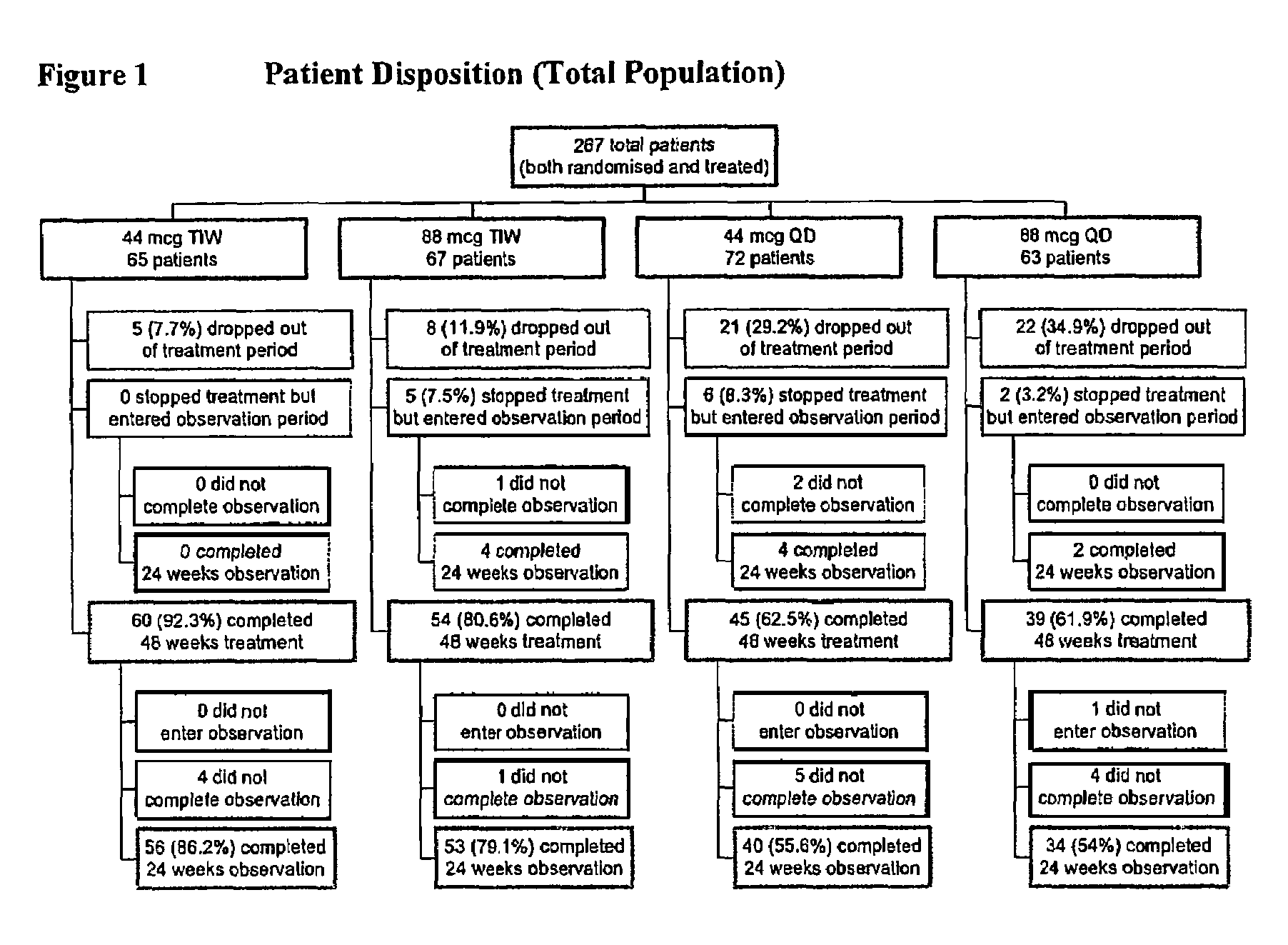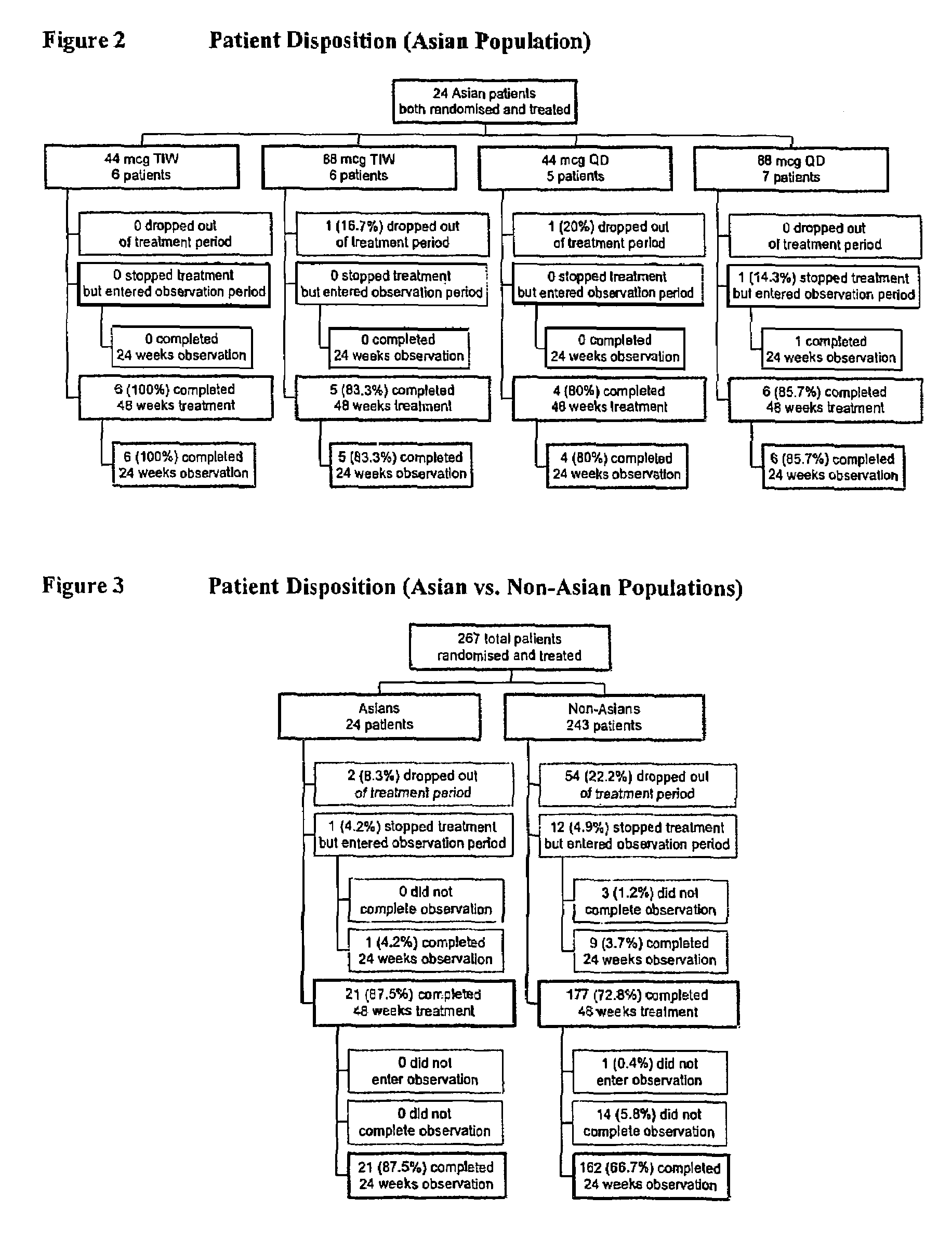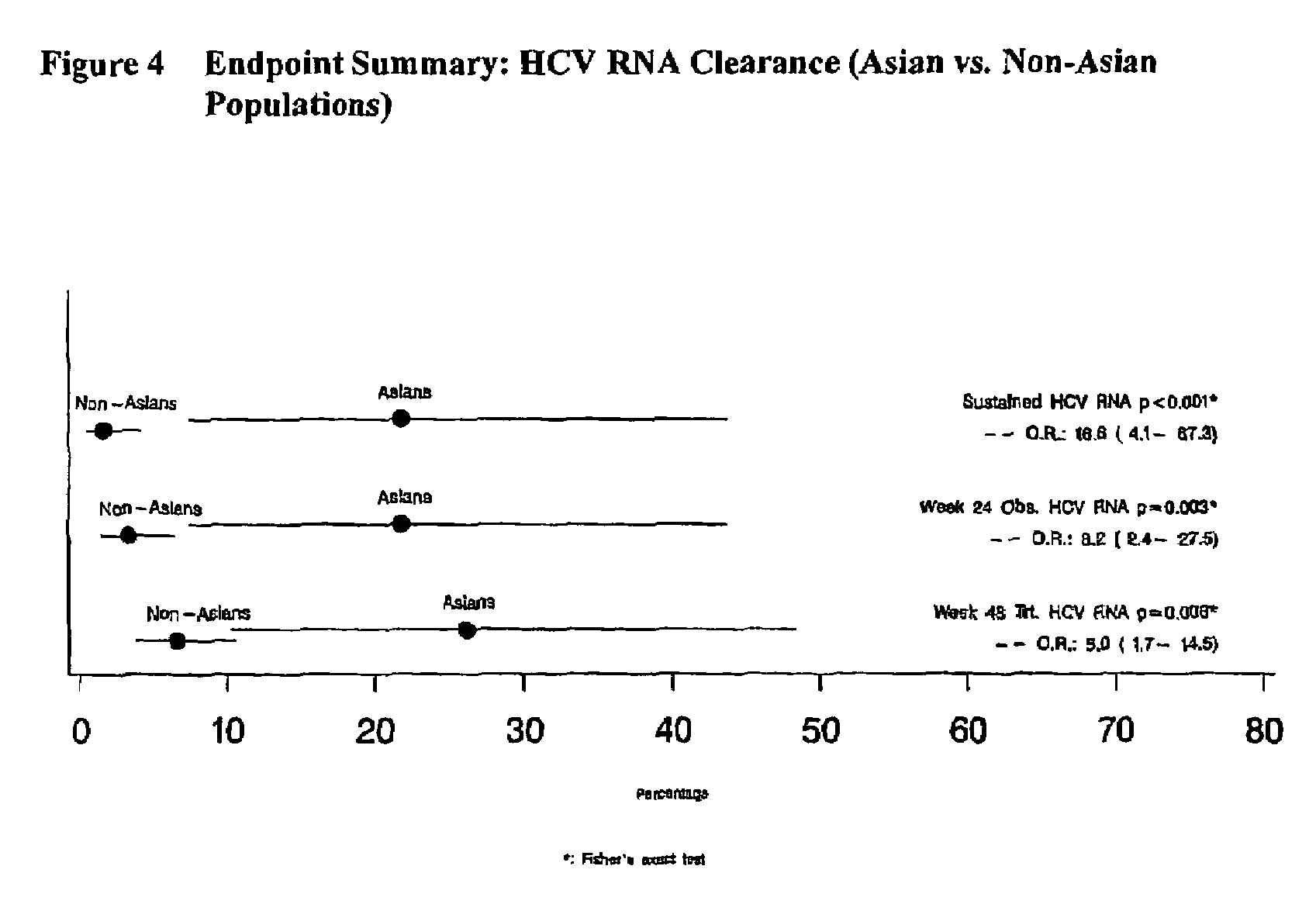Treatment of hepatitis C in the Asian population with subcutaneous interferon-beta
a technology of interferon and hepatitis c, which is applied in the direction of peptides/proteins, drug compositions, peptides, etc., can solve the problems of affecting the immune system, no complete treatment of chc, and the majority of patients with chc do not achieve complete responses to treatment with interferon-beta
- Summary
- Abstract
- Description
- Claims
- Application Information
AI Technical Summary
Benefits of technology
Problems solved by technology
Method used
Image
Examples
examples
Selection of Study Population
[0156]It was planned to enrol approximately 250 patients, 200 without cirrhosis and 50 with compensated cirrhosis as defined in the following section. To be eligible for inclusion, patients had to satisfy all of the following criteria within 28 days prior to Study Day 1, which was defined as the first day of treatment with IFN beta-1a: any exceptions had to be approved by the Investigator at the time of enrolment.
Inclusion Criteria
[0157]1. Hepatitis C infection, established by serum positivity for HCV RNA (by RT-PCR).[0158]2. Previous treatment with any type (or types) of interferon-alpha (at least 12 weeks of treatment at a dose of at least 3 MIU 3 times a week), with one of the following outcomes:[0159]i. Failure to normalise serum ALT, or[0160]ii. Normalisation of ALT followed by breakthrough (ALT elevation) before the end of therapy.[0161]3. Patients who achieved normalisation of serum ALT during treatment with IFN-alpha but relapsed after treatment ...
PUM
| Property | Measurement | Unit |
|---|---|---|
| Tm | aaaaa | aaaaa |
| Tm | aaaaa | aaaaa |
| temperature | aaaaa | aaaaa |
Abstract
Description
Claims
Application Information
 Login to View More
Login to View More - R&D
- Intellectual Property
- Life Sciences
- Materials
- Tech Scout
- Unparalleled Data Quality
- Higher Quality Content
- 60% Fewer Hallucinations
Browse by: Latest US Patents, China's latest patents, Technical Efficacy Thesaurus, Application Domain, Technology Topic, Popular Technical Reports.
© 2025 PatSnap. All rights reserved.Legal|Privacy policy|Modern Slavery Act Transparency Statement|Sitemap|About US| Contact US: help@patsnap.com



